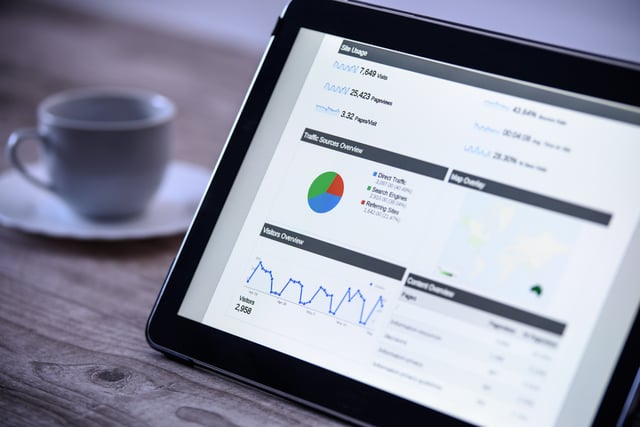
All PR professionals are faced with the same challenge: proving how results impact the bottom line. There are no easy formulas to crack this code, but there are ways to measure success that go beyond ad value, an outdated metric used to gauge the impact media coverage has on a campaign.
A content marketing program is a great way to leverage and promote your media coverage and other types of content including bylined articles, videos, and blogs. Once you have a deep understanding of your audience, including their interests, challenges and needs, you can start to develop and distribute personalized content to turn them into leads.
Measure Engagement with Google Analytics
How do you determine if your content is getting into the right hands and moving the needle for the company? Google Analytics offers an in-depth look into how people are navigating your website and engaging with your content. It offers deep insight into your visitors’ demographics, when they’re on your website and even the type of device they’re on. This is all useful information for adapting your content strategy to fit your audience’s behaviors.
Since the company website is the hub for all of your content, it's best to start by assessing the website data. Here are four basic reports in Google Analytics that will help measure the success of your content and inform how you should evolve your campaign:
Unique Visitors
The unique visitors metric gives you the number of individual people visiting your website over a period of time. You can sort your results by a specific timeframe and can even compare those results to the previous year. Pay attention to the ebbs and flows on the graph to see if there was a bump in traffic when a press release was distributed or when you implemented a content campaign that drove people to the website.
Page Views
The page views report details the top pages people are visiting, average time spent on the page, bounce rate and more. These metrics are important for learning how well content is performing. Are your blog, newsroom or other key landing pages getting the traffic you’re expecting?
Average time spent on a page is a good indicator of how engaged your visitors are. If you published a 6,000-word report and the user is leaving after only 30 seconds, you might want to test a different topic theme or try a new format like video to keep their attention longer.
Behavior Flow
The behavior flow chart paints a picture of how users navigate the website page by page. You can see where they start, where they go next and where they drop off. It offers another way to investigate how people are engaging with your content and whether they're going down the path you want them to take. You may assume the blog is the next stop after the homepage, but the data may prove otherwise.
Top Referring Sites
A crucial part of your content strategy is to know how users are finding the content on your website, whether through an organic search, direct search, social media or a link in an email. It may be helpful in deciphering where you should focus your resources and a key indicator for how well your inbound marketing and SEO strategies are working .
If social media plays a role in your campaign (and it should to some extent!), you should also review the social referral report. It allows you to see which platforms are the biggest drivers to your website in addition to which content drove them there.
Use Data to Inform the Campaign Strategy
Google Analytics may seem daunting, but it’s an invaluable tool for learning more about traffic to and from your content sources. The results tell a story. If it's not the one you were expecting, there are steps you can take to change its direction and the data can help guide the way.
Click the image to download our free guide to learn how to piece together the new world of PR metrics.





Let’s Connect
Ready to build, grow, manage and protect your brand? Complete the form below to discuss how we can help.